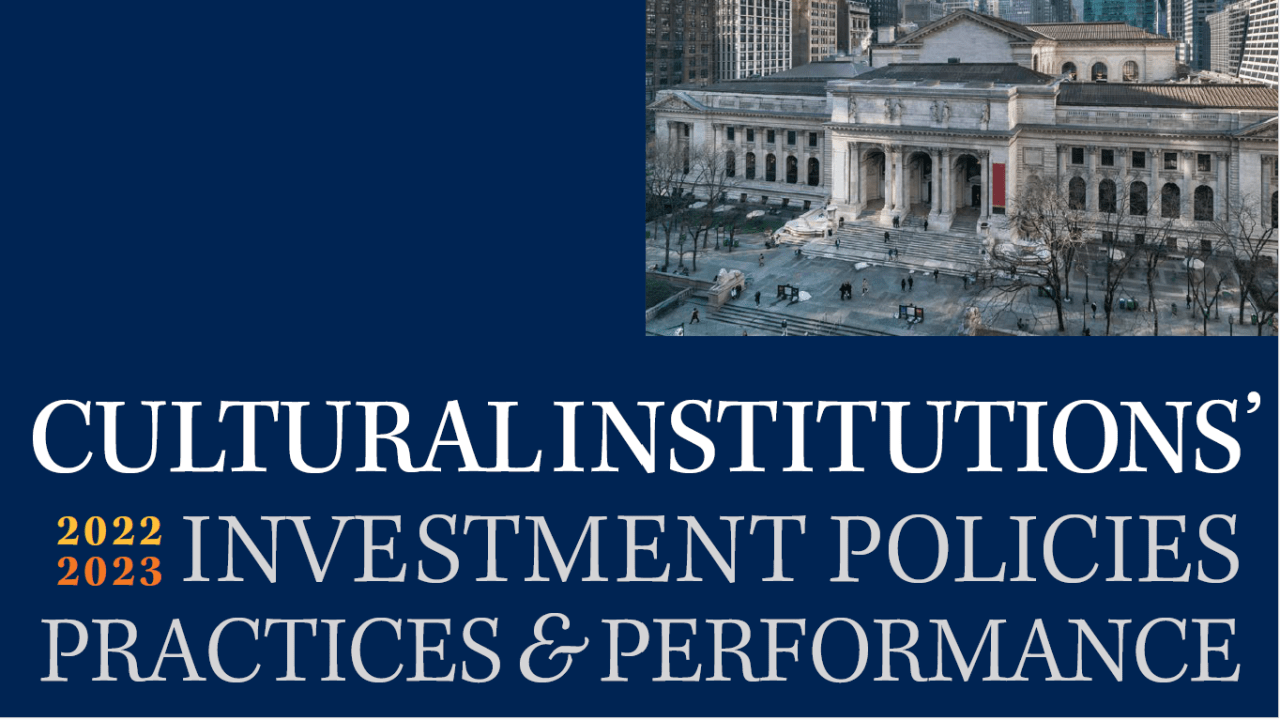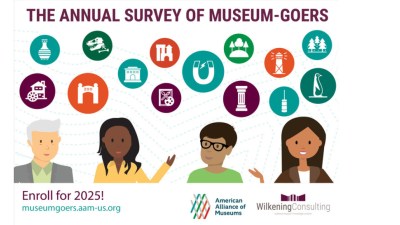
Download the report
Introduction
In 2023, the American Alliance of Museums, Fiducient Advisors, and The Morton Arboretum conducted a national investment benchmarking study aimed at developing actionable, authoritative field insights into investment management, objectives, and performance for museums, zoos, gardens, and performing arts organizations across the country.
In the rapidly evolving financial landscape of cultural institutions where the intersection of mission-driven goals and fiscal sustainability is crucial, the inaugural edition of Cultural Institutions’ Investment Policies, Practices, and Performance offers cultural leaders with valuable insights tailored to their unique needs, filling a gap left by previous investment benchmarks designed for larger entities or higher education organizations.
Join us for a webinar on Wednesday, February 14, 2024 to discuss the report and gain:
- Current insights into investment practices among cultural institutions
- Strategies for more effective financial stewardship in uncertain times
- Discussion and guidance on best practices in investment management today and beyond
Register for the webinar
Executive Summary
A Challenging and Evolving Landscape
The past few years have tested cultural institutions, with the COVID-19 crisis and subsequent economic downturn in 2022 significantly impacting financial stability. This environment underscores the importance of well-managed investment portfolios in securing long-term fiscal strength. The scrutiny on these assets has reached unprecedented levels, necessitating access to tools and resources for responsible stewardship and informed decision-making.
Survey Overview
The 2023 study boasts 226 respondents from diverse cultural institutions, including Botanical Gardens/Arboreta, Art Museums, History Museums, Symphony Orchestras, Zoos and more. The participants covered a spectrum of investment pool sizes, from those under $10 million to larger institutions with over $100 million in assets.
Key Findings
The study reveals a commitment to building and growing investment pools to advance missions. Emphasis on best practices, risk management, and cost considerations were identified as top priorities, with a noticeably increased interest in socially conscious investing. Decision-making authority predominantly lies within Finance or Investment Committees, almost always with professional advisory involvement.
Investment Strategies and Performance
Organization size plays a pivotal role in shaping investment strategies, with smaller pools favoring domestic equities and bonds, while larger entities allocate greater amounts to alternative investments like private equity and hedge funds. Despite the challenges of 2022, diversified portfolios (including stronger positions in equities) generally yielded favorable returns over three, five, and ten-year periods.
Setting Objectives and Future Priorities
Survey respondents indicated various changes in investment practices over the past five years, ranging from shifts in asset allocations to embracing Environmental, Social, and Governance (ESG) principles. Improving investment returns remains the top priority for many, with a growing focus on socially conscious investing.
Governance and Oversight
The report highlights the prevalent role of Finance or Investment Committees in decision-making, often with professional advisory support. The engagement of outside investment advisors underscores the importance of effective stewardship. The study also explores spending policies, revealing a diverse range and the impact of portfolio size on considerations like diversity, equity, and inclusion (DEI) criteria.
Concluding Thoughts
This benchmarking initiative offers a nuanced perspective on cultural institutions’ investment landscape, emphasizing the focus on growth, best practices, and external advisory support. As investment pools expand, the report suggests an increased emphasis on prudent oversight and management, with leaders turning to data and professionals for effective asset management.
This inaugural edition serves as a valuable resource, arming cultural leaders with knowledge to help navigate the complexities of their investment programs and impact the overall success of their organizations.
In conclusion, this study not only sheds light on the current state of investment practices among cultural institutions but also serves as a guiding beacon for future decision-making. The insights provided in the report are a testament to the collaborative effort of Fiducient Advisors, the American Alliance of Museums, and The Morton Arboretum in addressing the unique financial challenges faced by cultural leaders in today’s dynamic environment. As the cultural sector continues to navigate financial complexities, this study stands as a vital resource, offering a roadmap for effective financial stewardship and long-term success for cultural institutions.
Download the report
Source: 2022-2023 National Investment Benchmarking Study Survey. Data as of April 11, 2023.
Produced in Partnership with











Comments